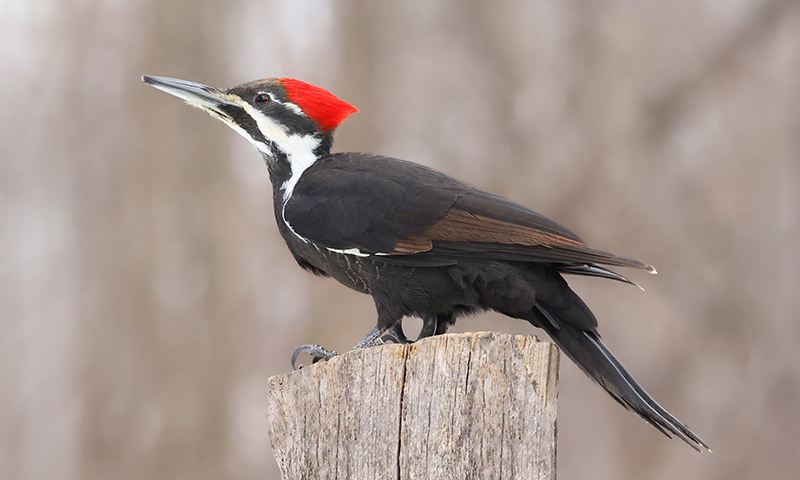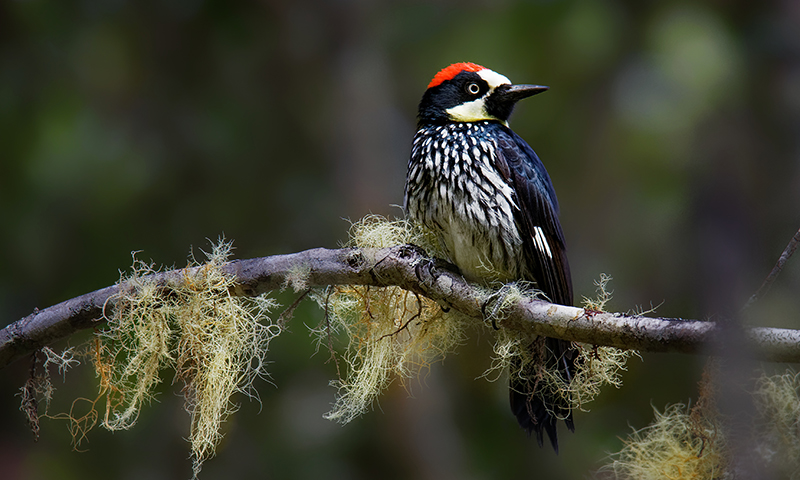All About Woodpeckers and How to Attract Them
You already know woodpeckers drill into trees with their powerful beaks. But did you know it's their acute sense of hearing that guides them to beetle-filled bark? Yes! They listen for the sounds of insects chewing and crawling to help guide them to their next meal.
But that's not all. Woodpeckers also hammer away on trees to create places to build nests and hunker down during winter weather. And, if you hear the rhythmic pecking in the spring, the woodpecker is likely "drumming" to mark its territory or attract a mate. Interesting!
So, we had to learn more.
We chatted with W. Donald "Don" Orkoskey, a Pennsylvania-based professional photographer and photography teacher of over 25 years who offers classes about photographing wild birds. After studying these unique birds through his camera lenses, he's learned a few things about their appearances, mannerisms, and attracting them so he can get the perfect shots.
"The biggest misunderstanding when it comes to woodpeckers is that they are damaging trees," Orkoskey explained. "While woodpeckers such as Sapsuckers do drill into otherwise healthy trees, nearly all other woodpeckers prefer dead or infested, and therefore unhealthy, trees. So, if you see a woodpecker creating a nest or drilling for food in your favorite tree, it's unlikely they're damaging it. In fact, they're likely letting you know there is already something really wrong with that tree."
How to Identify a Woodpecker
There are over 200 varieties of woodpeckers worldwide, with 23 species native to the United States. (The American Bird Conservancy shares a detailed list of the US-based varieties.) Some popular species that Orkoskey notices at his backyard feeders in Pittsburg include Northern Flickers, Downy, Hairy, Red-Bellied, and Red-Headed.
Many beginning birders know they've spotted a woodpecker when they see a bright red head or face feathers and hear the speedy drill-like pecking of this species. Although not all woodpeckers have red markers, many do. These include the Acorn, Downy, Golden-fronted, Hairy, Ladder-backed, Lewis's, Nuttall's, Pileated, Red-bellied, and more.
You can also identify a woodpecker by the bird's activities.
Orkoskey says it's best to use your ears rather than your eyes to locate a woodpecker. He explains their pecking is not melodic like a songbird's vocalizations. Instead, they are working on finding food or building shelter.
"One of my favorite woodpeckers is the Pileated woodpecker. It's a very large species, and they create large holes, as long as four feet, in dead trees or branches for nesting. As a result, some of their old nests become new nests for small owls, which I think is incredibly cool!" Orkoskey commented.

Pileated woodpecker
Another fascinating variety is the Acorn woodpecker found in the Western areas of the United States and Central America. These talented birds find acorns and drill perfectly sized holes in dead trees to store the nuts. As the acorns dry out, the birds move them to smaller holes for safekeeping. Acorn woodpeckers are communal, so they guard their acorns, lay eggs, and raise their young together.

Acorn woodpecker
The Cornell Lab of Ornithology's All About Birds Bird Guide for woodpeckers shares colorful photographs, migration range maps, audio recordings of vocalizations, and so much more for the 23 species found in the United States.
Where to Find Woodpeckers in Nature
Woodpeckers have a nearly global presence, with the exception of some areas, including Antarctica, Madagascar, and Australasia. Some species migrate, and some don't.
For example, the Red-headed woodpecker migrates a short range for breeding and wintering, whereas the Yellow-bellied Sapsucker travels the farthest of the North American woodpeckers. Birding apps can help you not only identify various species of woodpeckers but also alert you to migration patterns and sighting locations.
Woodpeckers scurry up tree trunks in woodlands, scrublands, and tropical rainforests to find flies, caterpillars, and beetles to snack on. They also investigate the ground for ants and fallen acorns to round out a meal. Most species in North America focus on continuous woodlands and gravitate to the biodiverse foliage at the edges of forests, where dead and dying trees provide food and nesting opportunities.
How to Bring Woodpeckers to Your Backyard
In your backyard, woodpeckers can feast from suet feeders or any feeder that can support their weight and size, which is typically larger than most songbirds.
Orkoskey has observed that woodpeckers have a tough time balancing on wire perches and do better on bigger, sturdier surfaces that mimic the side of a tree. These sturdier surfaces allow their back toes and tail feathers to have a place to rest.
When it comes to mealtime, these inquisitive birds have a varied palette. You'll find woodpeckers tapping into trees for tasty sap and insects, enjoying seasonal wild fruits, and feasting on a variety of seeds and nuts too.
"I personally keep my feeder stocked with black oil sunflower seeds, which all the woodpeckers I listed (along with many other birds) really love," Orkoskey shared.
Woodpeckers also enjoy suet and seed cakes, such as the Kaytee Woodpecker Cake, filled with sunflower seeds, peanuts, safflower seeds, pecans, and pine nuts. Simply slip the cake into a cake feeder and let the woodpeckers indulge! This cake also attracts chickadees and nuthatches.
"You can smash suet into holes or cracks of trees, and they will clean it right out of there," Orkoskey explained. "A fellow bird photographer here in Pittsburgh hangs branches with large diameter holes drilled into them, which he stuffs with suet. Woodpeckers love this because they don't have to compete with many other species for this food. They can hold onto the vertical branches even as the branches sway thanks to (most of them) having four toes, with two pointing forward and two pointing backward. Their strong tail feathers also help stabilize themselves."
Or, you could try the Kaytee Woodpecker Bird Seed Bar. Simply use the ready-to-hang feature to place it in the branches of a tree, and wait for your feathered friends to visit. They will enjoy dining on the sunflower seeds, peanuts, cracked corn, safflower seeds, milo, peanut hearts, pecans, pinenuts, and honey.
Woodpeckers Are Simply Amazing
With all that pecking, you might just wonder how woodpeckers actually reach the sap and insects deep inside trees. Woodpeckers have super long tongues to help them reach deep into the holes they drill.
The tongue actually extends beyond the bird's mouth and wraps around the back of the skull. A woodpecker's tongue can measure up to one-third of its total body length. If a human tongue was proportionate to a woodpecker's tongue, it would be approximately two feet long!
Are you intrigued by these colorful, smart birds? Why not try attracting woodpeckers to your backyard? Get started by browsing Kaytee Wild Bird foods and supplies.
